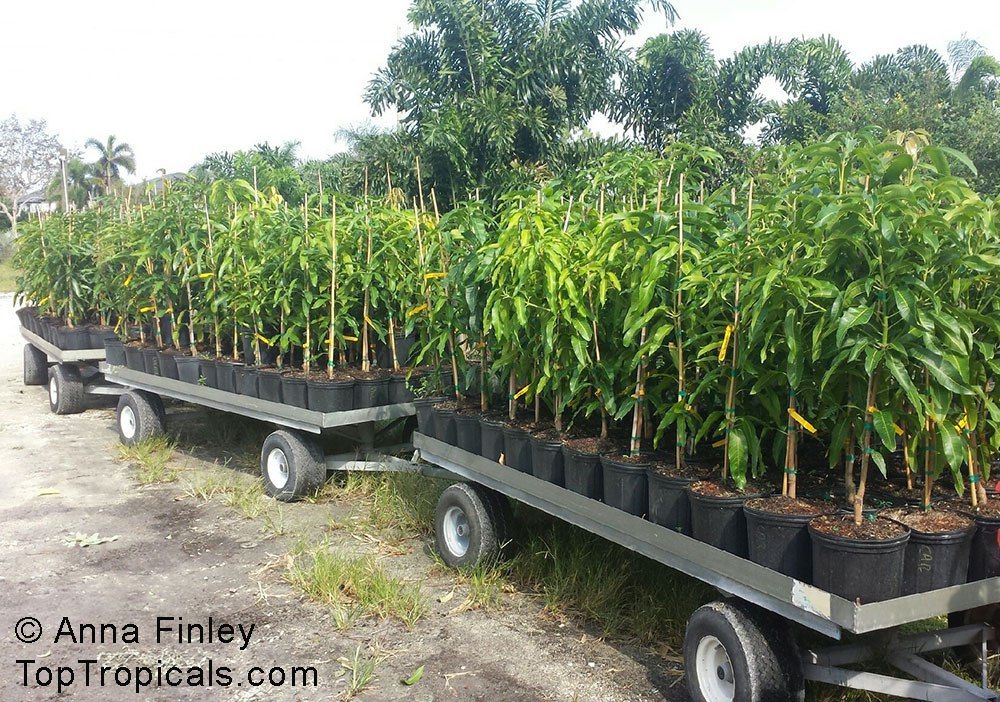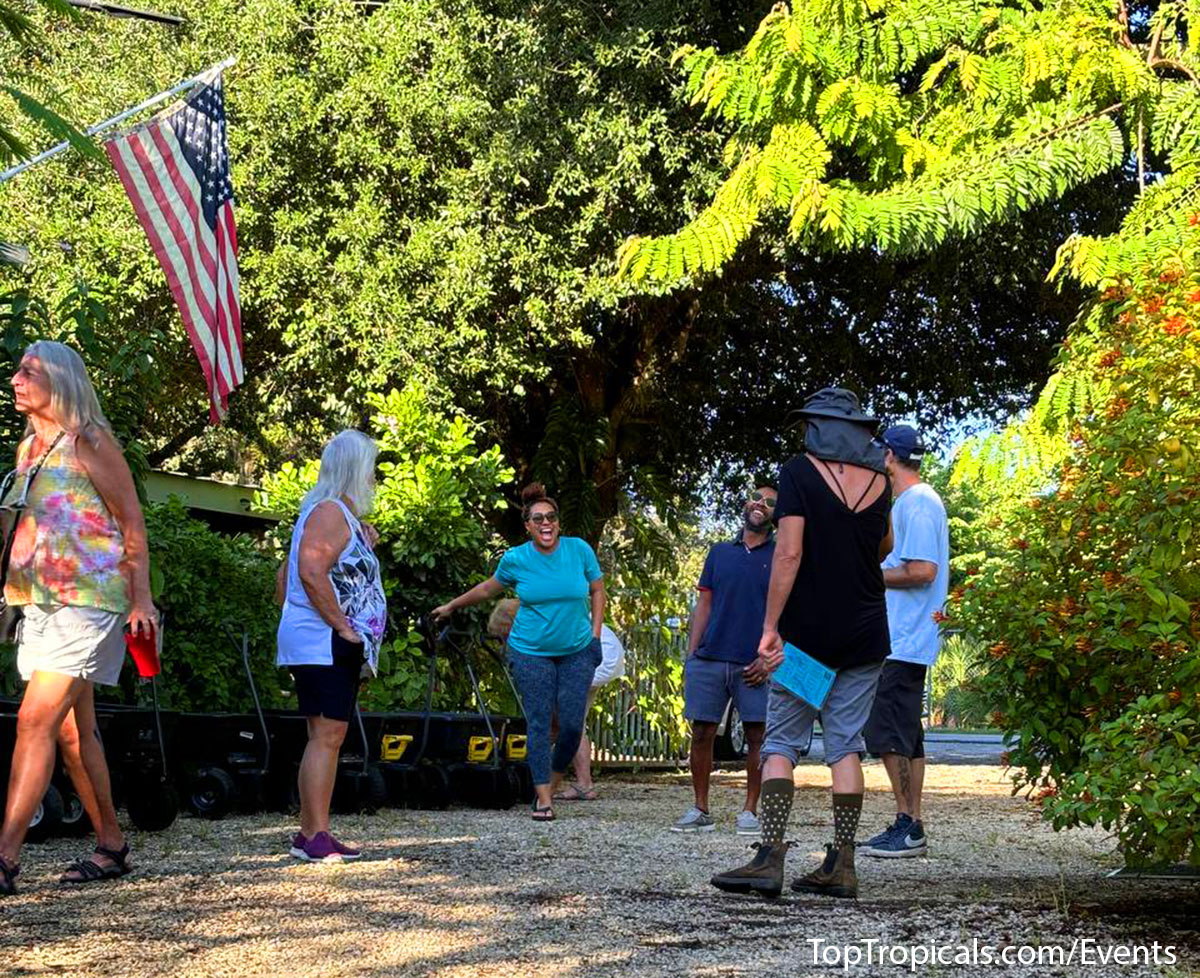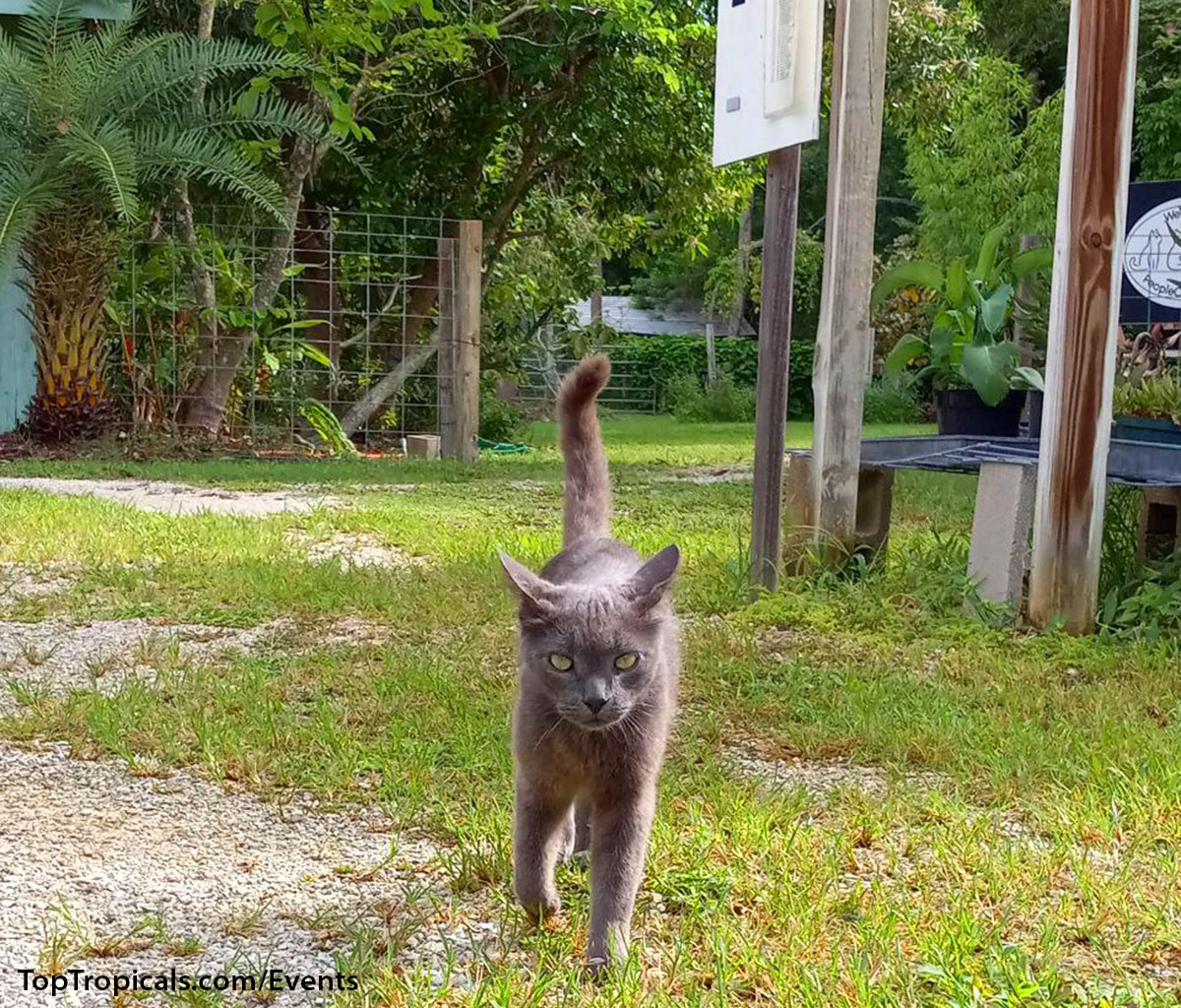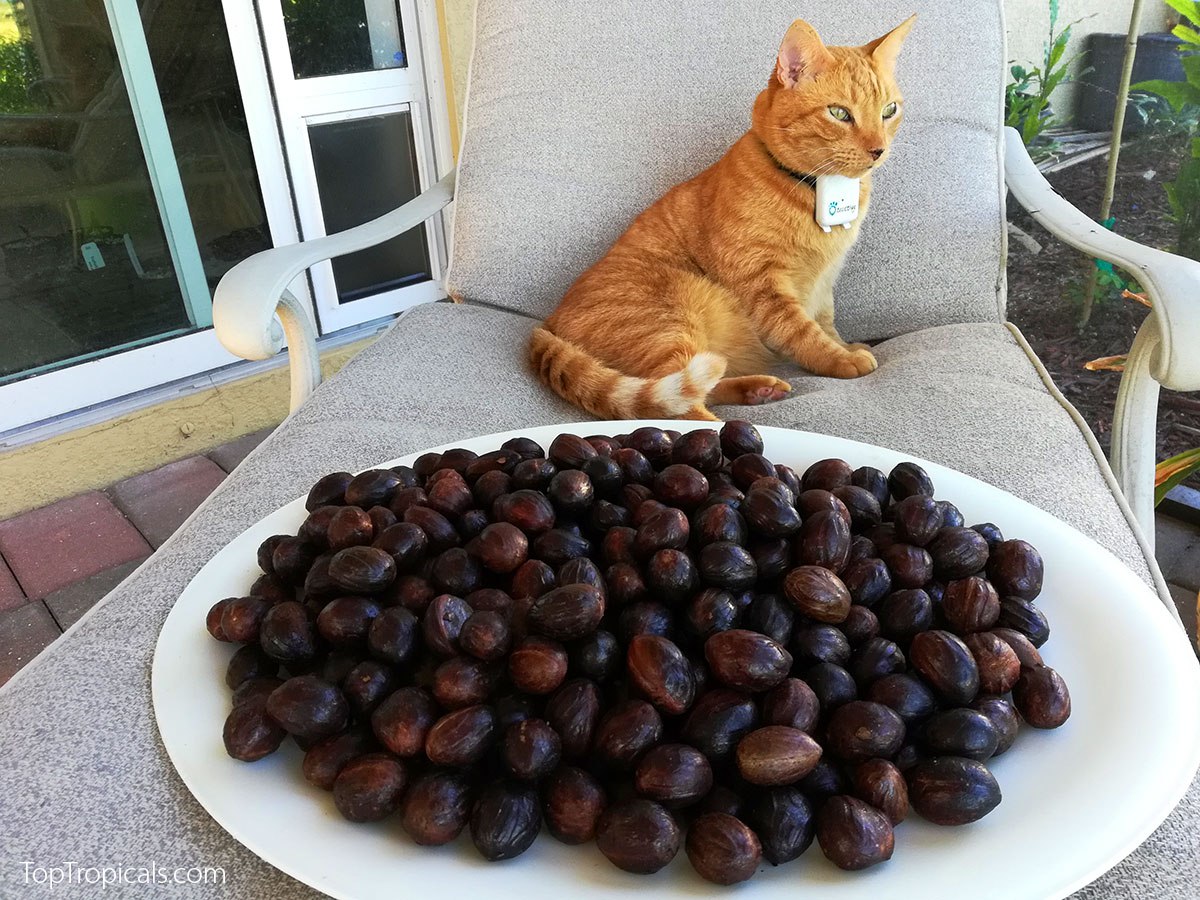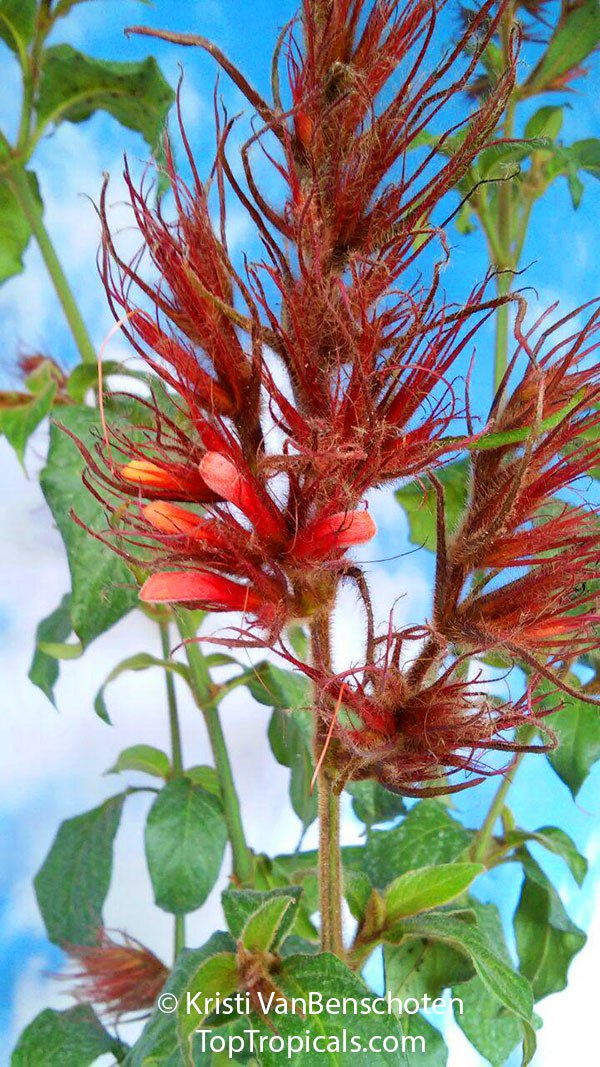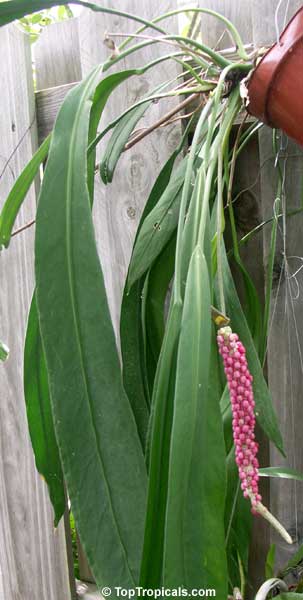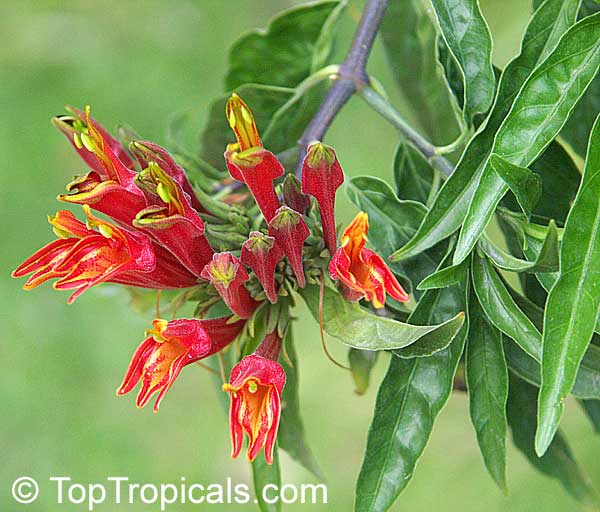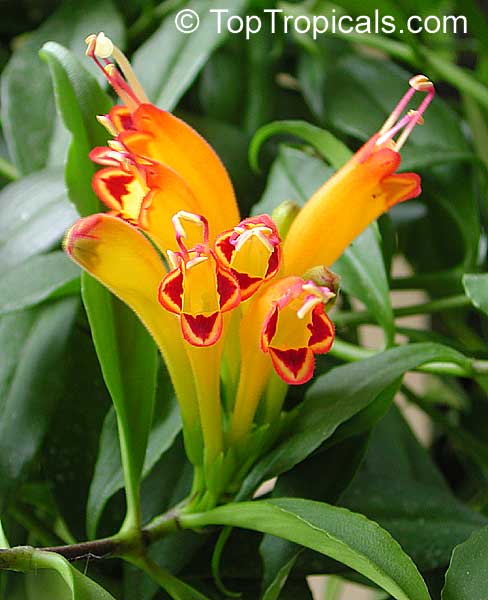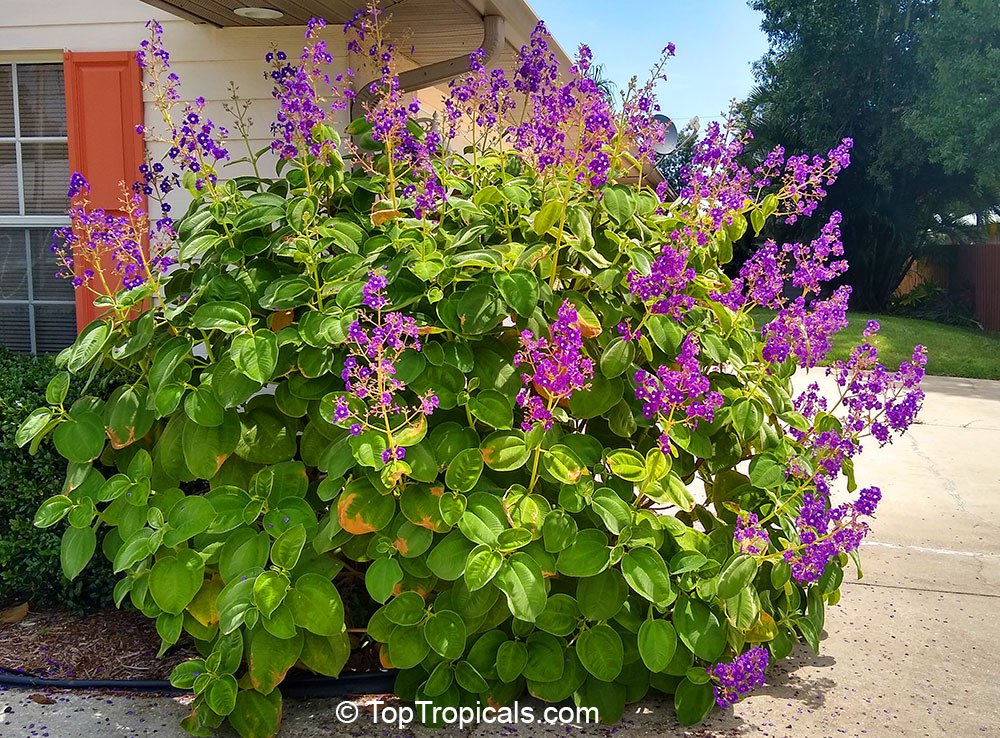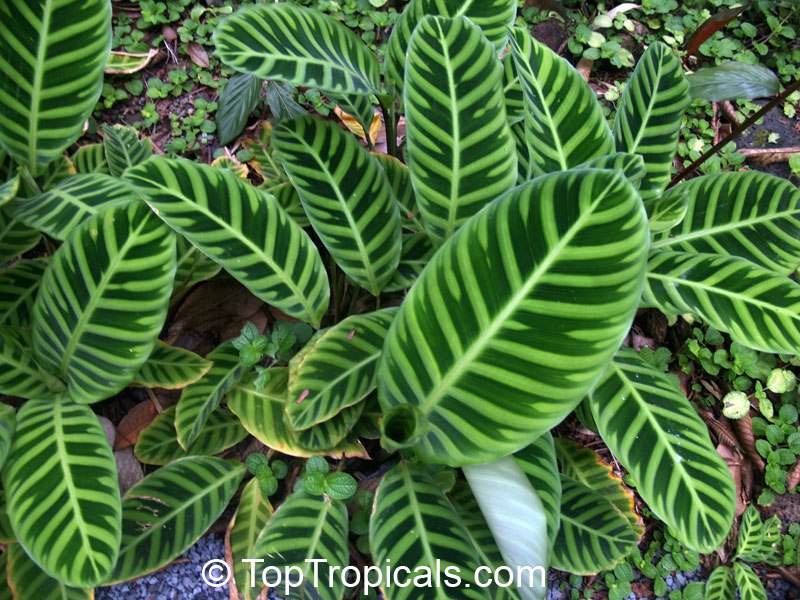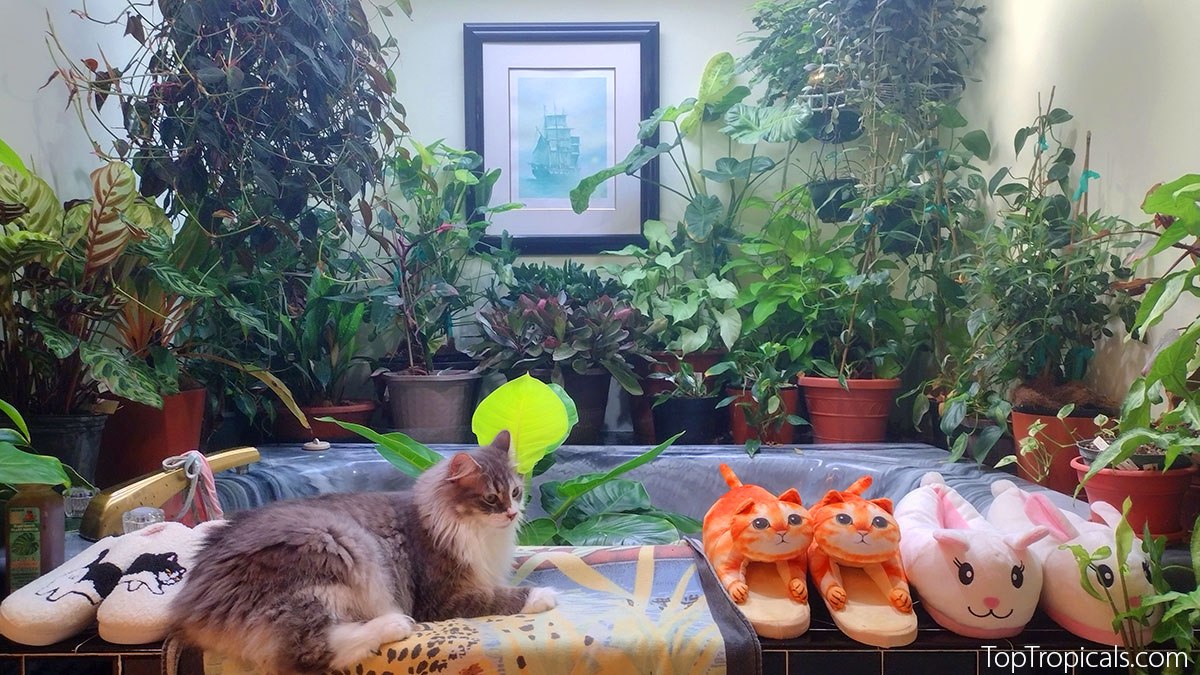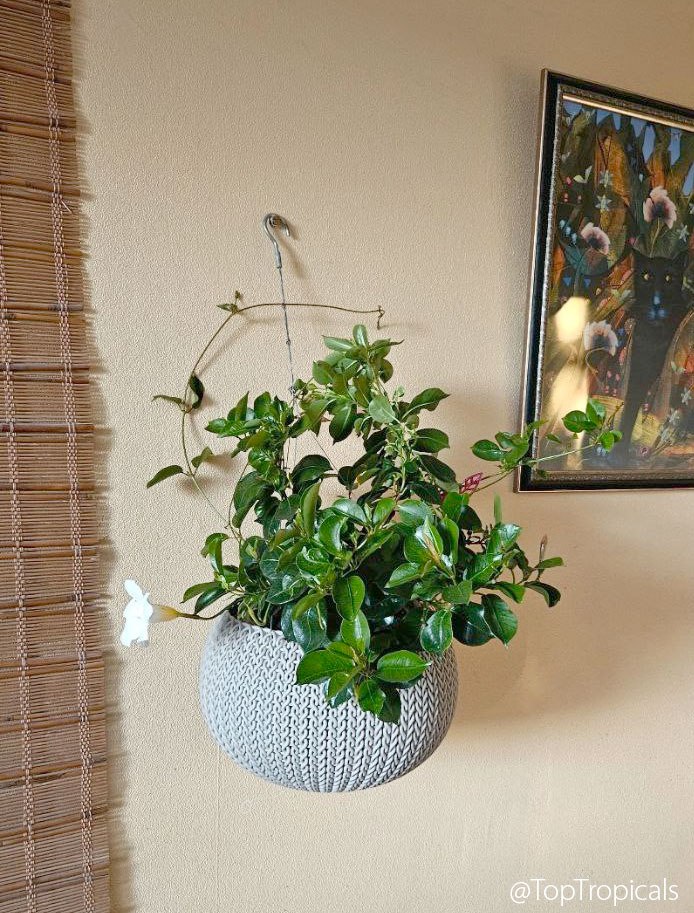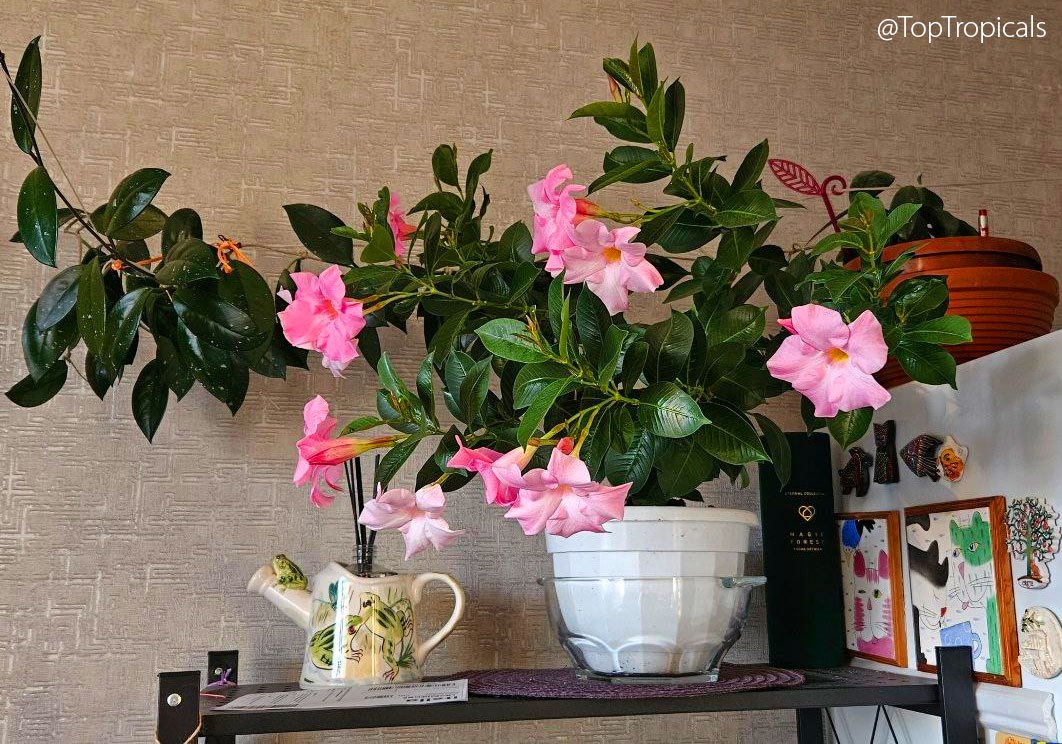A: One of the most common challenges in tropical
plant care, including houseplants, is overwatering, particularly in container
gardening. So, how much water is too much?
The rule of thumb: let the soil dry out a bit before watering
again, and never water if the soil feels wet to the touch. For indoor plants
with saucers underneath, ensure they don't sit in standing water by removing any
excess from the saucer after watering. However, remember that the watering
schedule alone isn't the only key to success!
Improve drainage. Surprisingly, water itself isn't harmful to
plants, no matter how generous your watering is. The real issue is poor
drainage, which leads to stagnation and bacterial buildup, ultimately causing root
rot.
In the nature. If you've traveled to places like Hawaii or
explored tropical jungles, you might have noticed plants thriving between rocks
with minimal soil, receiving a near-constant fine mist of rain. Conversely,
swamps support very few trees - only bog or water plants adapted to wet
conditions can survive there. The lesson? It's not the water, it's the growing
medium!
The Soil Solution: for potted plants, always use a high-quality
potting mix with excellent drainage properties. This should include ample
"soil conditioners" such as perlite, vermiculite, and pine bark. At our nursery,
we use a professional soil mix called Abundance. Learn
more about potting soil.
Pot size matters. And the last but not least: if you tend to
overwater your potted plants, consider using the smallest container size that
comfortably fits the root system. A pot that's too large can mean excess wet
soil, increasing the risk of root rot. With proper fertilizer program, container plants don't need to much soil to
thrive.
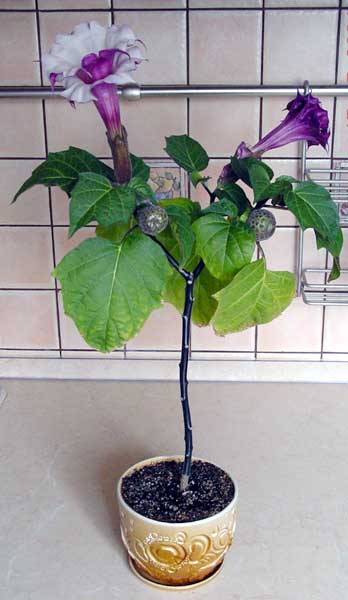
Photo above:
Datura Metel - Horn-of-Plenty - doesn't need a large container for happy
blooming indoors!
